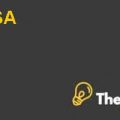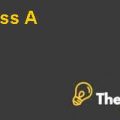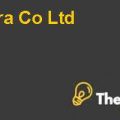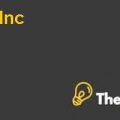
Introduction:
Hansson Private label Inc. (HPL), was a leading developer of home care and personal care products like soap, shampoo, mouthwash, shaving cream, sunscreen and other related products which they sold under the brand label of Hansson’s retail partners, which included drug stores, supermarkets and mass merchants. The idea behind the incorporation of Hansson Private Label Inc. was initiated in 1992 and it experienced a great deal of growth since its establishment.
At the start of 2008, Hansson Private Label Inc. was evaluating an expansion plan of its manufacturing facilities due to the growth perspectives of the company. The reason behind the expansion program was to fulfill the rising demand of the company’s products since the company was already operating at its full capacity and the new orders would require additional manufacturing facilities to be installed.
Scope:
- Company’s business operations, capital planning strategy, core competencies and past performance.
- Problem Diagnosis.
- Evaluate and analyze expansion project.
- Changes in the assumptions and limitations.
- Recommendations.
HANSSON’s business operations, Capital planning strategy, Core Competencies and Past performance:
Hansson Private label Incorporation has been in the market since 1992 and in the minimum time of just 15 years of operations, the company has achieved its optimum and peak position where it was operating at its full capacity.
Since, the company wants to grow and due to the increased demand of the company’s products, the company would be required to expand its current manufacturing capacity and add new equipment to accommodate its future demands. The historical financial performance of its last five years can be observed for the year 2003 to 2007; it shows that Hansson Private Label Inc. was effectively and efficiently realizing its sales growth throughout each year. On the other hand, EBITDA and Net income had declined slightly in 2005, but it managed to improve in 2006 and 2007 substantially.
Problem Diagnosis:
The problem faced by Hansson Company was regarding the potential expansion in the manufacturing facilities. The Hansson Private Label Inc. has been approached by one of its largest retail customers, who offered to increase its share of private label manufacturing from the Hansson Company. Since the company was already operating at its full capacity, the management had to decide the expansion of the manufacturing capacity to facilitate its largest retail customer.
The main issue was regarding the investment of a substantial amount in this proposed project. The investment would require around $50 million consisting of different options; therefore, this investment could be considered as a risky investment.
Evaluate and Analyze Expansion Project:
After conducting careful analysis and evaluation, we have calculated the projected Sales revenue by increasing the sales prices and multiplied by the increasing number of units to be sold. By subtracting all the expenses from the revenues, we have arrived at the figure of Gross Profit. Depreciation was calculated on the basis of cost components and their expected useful lives, which was first subtracted to arrive at the EBIT figure and then added to compute the value of free cash flows.
Net changes in working capital (WC) for each of the given year is calculated from the ratios of Days Payable Outstanding, Days Sales Outstanding and Days Sales Inventory as they provide the figures for accounts receivable, inventory and accounts payable.
Using these figures, calculation has been done for;
1. Cash flow forecasts
2. Net present value (NPV)
3. Internal rate of return (IRR)
Once the investment has been made, Hansson Private label Incorporation would not be able to undertake any further expenditure (Capex) in case if this expansion is being pursued. Therefore, the cash flows would exclude any capital expenditure. The future cash flows from the period 2009 to 2018 are expected to be $94.38 million for the new expansion project.
After the above procedures, the Net present value has been calculated to evaluate the current position of the proposed expansion plan. For this purpose, we have calculated the Weighted Average Cost of Capital (WACC) and the company’s discount rate which were based on some assumptions (mentioned in the Excel file). The WACC was 9.89% and using this discount rate, the present value future cash flow is found to be $4.91million..............................
This is just a sample partial case solution. Please place the order on the website to order your own originally done case solution.














